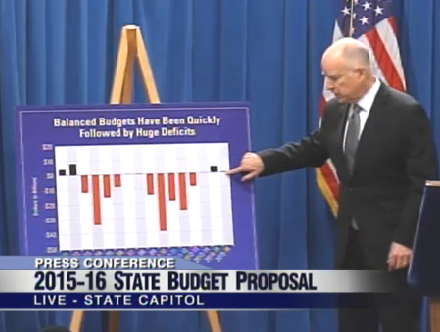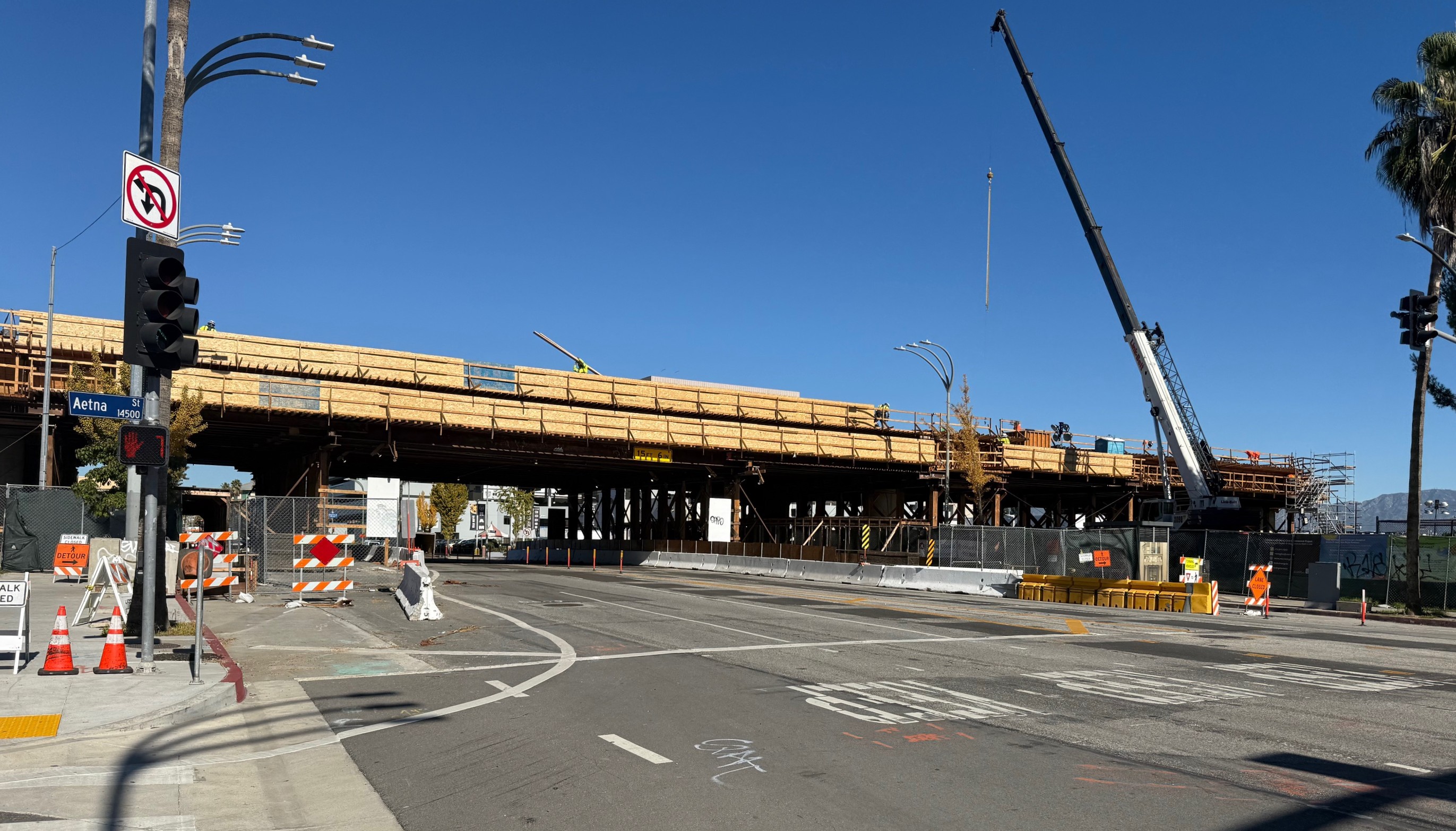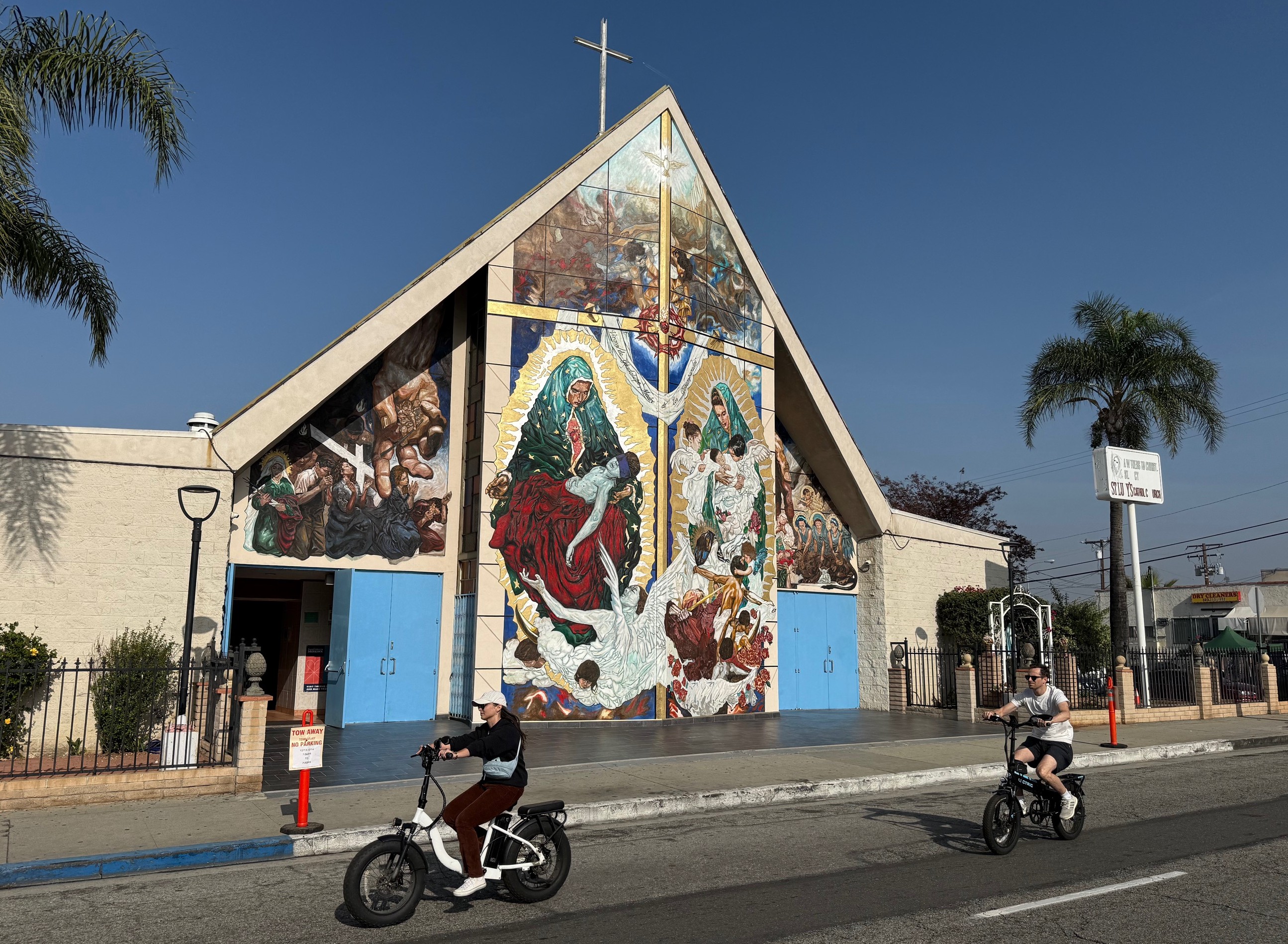
Governor Jerry Brown released his preliminary budget proposal [PDF] today in Sacramento, missing the opportunity to articulate the connection between spending on roads and meeting the climate change goals he proposed Monday in his inaugural speech.
The draft budget holds no huge surprises for sustainable transportation advocates. It mostly follows last year's budget for transportation spending. Brown made no move to change the allocations of cap-and-trade funds, which include a 25 percent for high-speed rail, with the rest of the expected $1 billion going to other projects that help reduce greenhouse gas emissions. The budget mentions the $350 million for last year's Active Transportation Program, but makes no mention of increasing that amount.
At the press conference, Brown highlighted funding for road maintenance and repair, but failed to connect spending on roads with his stated goal of reducing fuel consumption by 50 percent over the next fifteen years. That goal won't be easy to reach, and will take more than high-speed rail and electric cars.
“Getting people biking and walking is a critical part of that effort,” said Jeanie Ward-Waller of the National Safe Routes to Schools National Partnership. “Yet the Active Transportation Program is only one percent of the budget—less if you include cap-and-trade money,” which the governor's office expects to add another $1 billion to next year's budget.
“Yes, we have unfunded highway maintenance needs,” she added, “but as long as we keep building highways, we always will. We need to focus on shifting people to other modes.”
Instead Brown emphasizes high-speed rail as his main solution for reducing fuel consumption. His budget lists HSR among “healthy transportation alternatives,” alongside transit and walkable and bikable communities, that will receive half of cap-and-trade revenue.
But high-speed rail won't reduce greenhouse gas emissions any time soon, and the amount of money allocated to it dwarfs the Active Transportation Program, which has the potential to increase the number of people who choose bikes and walking.
State sustainable transportation advocates are cautiously optimistic about the preliminary budget, at least in its summary form. “This budget shows that we can solve our climate problems while lifting up our most vulnerable communities,” according to a statement by Josh Stark of TransForm.
Brown refused to discuss details about what funding for infrastructure repair and maintenance might look like or where it might come from, saying, “I'm identifying the problem, I have a team working on infrastructure, and we'll start engaging constituency groups and exploring what avenues of funding are available. I'm not going to preempt the discussions by predetermining what the outcome is.”
There will be plenty of discussions on the budget between now and the May revision. Meanwhile, with a new session, new legislators, and shifting committee memberships as well as staff assignments throughout the state capitol, there is a lot of uncertainty at the moment about how policy and funding will be shaped in the coming months.
For example, the new chair of the Assembly Transportation Committee is Jim Frazier, a Democrat from a town on the Sacramento River Delta. He was one of the legislators who signed a letter last July asking the Air Resources Board to exempt gas distributors from the cap-and-trade program, so it remains to be seen whether his interests will lean towards livability--or elsewhere.
The governor's main emphasis during the budget presentation was the need for fiscal responsibility. “Our long-term fiscal health depends on wise and prudent decisions,” he said. Despite recent reports of rising revenues, he maintained that California will face difficult budget decisions in coming years. “Steady as you go—that's what I'm aiming for,” he said.






